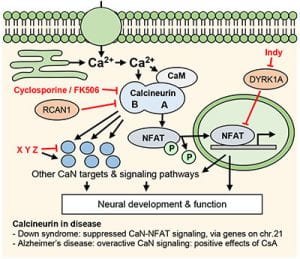Emerging imaging technologies for automated analyses of calcineurin-dependent brain function
NIH R01GM136906
Project Summary

Calcineurin is a phosphatase with broad clinical significance. Calcineurin inhibitors are used as immunosuppressants to prevent rejection of organ transplants and calcineurin signaling is thought to play a critical role in Down syndrome and Alzheimer’s disease. However, very little is known about the effects of modulated calcineurin signaling in the brain. Animal model systems are available, but changes in neural networks are easily missed when studying an organ as complex as the brain. Analyses of behavior offer a potential solution, since subtle changes in brain structure and function can be detected. The laboratory of the principal investigator developed an imaging system for automated analyses of behavior in zebrafish larvae. This imaging system can measure larval responses to moving visual stimuli in microplates, which is not possible with commercially-available imaging systems. The capabilities of this imaging system will be further expanded for automated analyses of complex behaviors in a 384-well format. The project is guided by the central hypothesis that novel imaging technologies for high-throughput analyses of vertebrate behavior will contribute to the discovery of novel treatments for neural dysfunction. This hypothesis will be tested in three specific aims. The first aim is to optimize imaging technologies for high-throughput analyses of complex behavior. The second aim is to use the optimized technologies to image calcineurin-dependent behaviors. The third aim is to screen for novel treatments of calcineurin-related neural dysfunction. Overall, successful completion of these aims will expand the methodologies for high-throughput analyses of complex behaviors, provide a better basic understanding of calcineurin signaling in the brain, and contribute to the design of novel treatments for calcineurin-related neural dysfunction. The project will benefit from the vibrant and collegial research environment at Brown University. The principal investigator has a primary appointment in the Department of Molecular Biology, Cell Biology and Biochemistry and is a faculty member in the Carney Institute for Brain Science and the Center to Advance Predictive Biology. The department offers expertise in developmental biology and cell signaling and the two centers provide a dynamic intellectual environment for research in behavioral neuroscience and the analysis of signaling networks using high-content imaging technologies.
